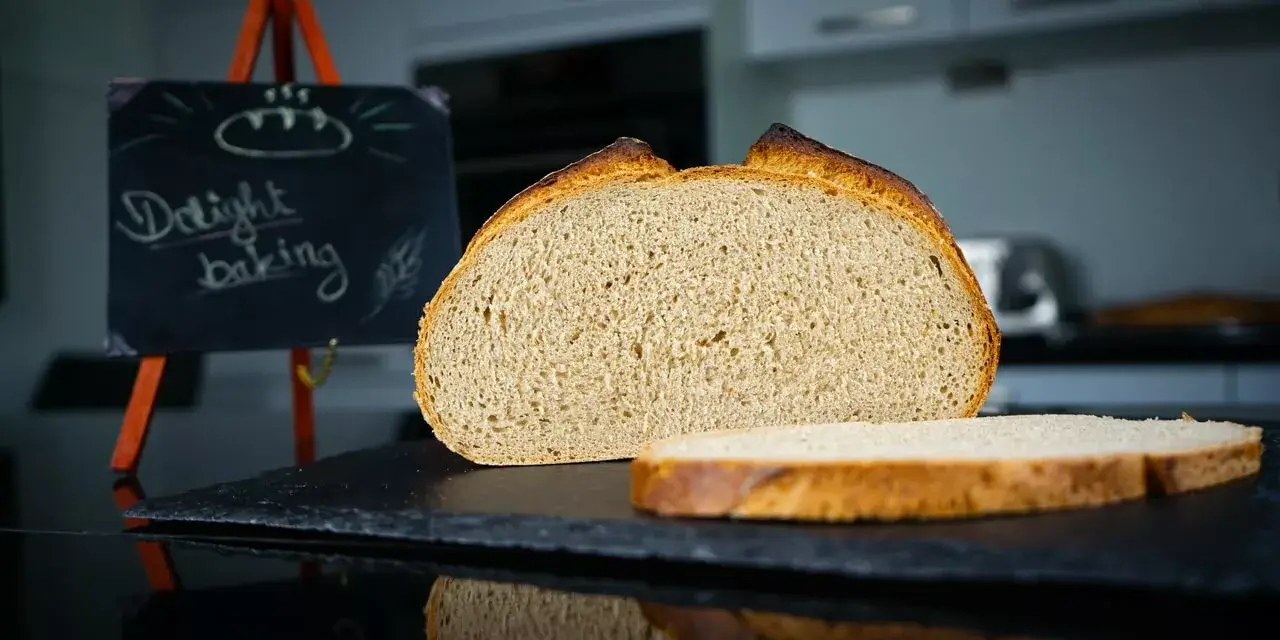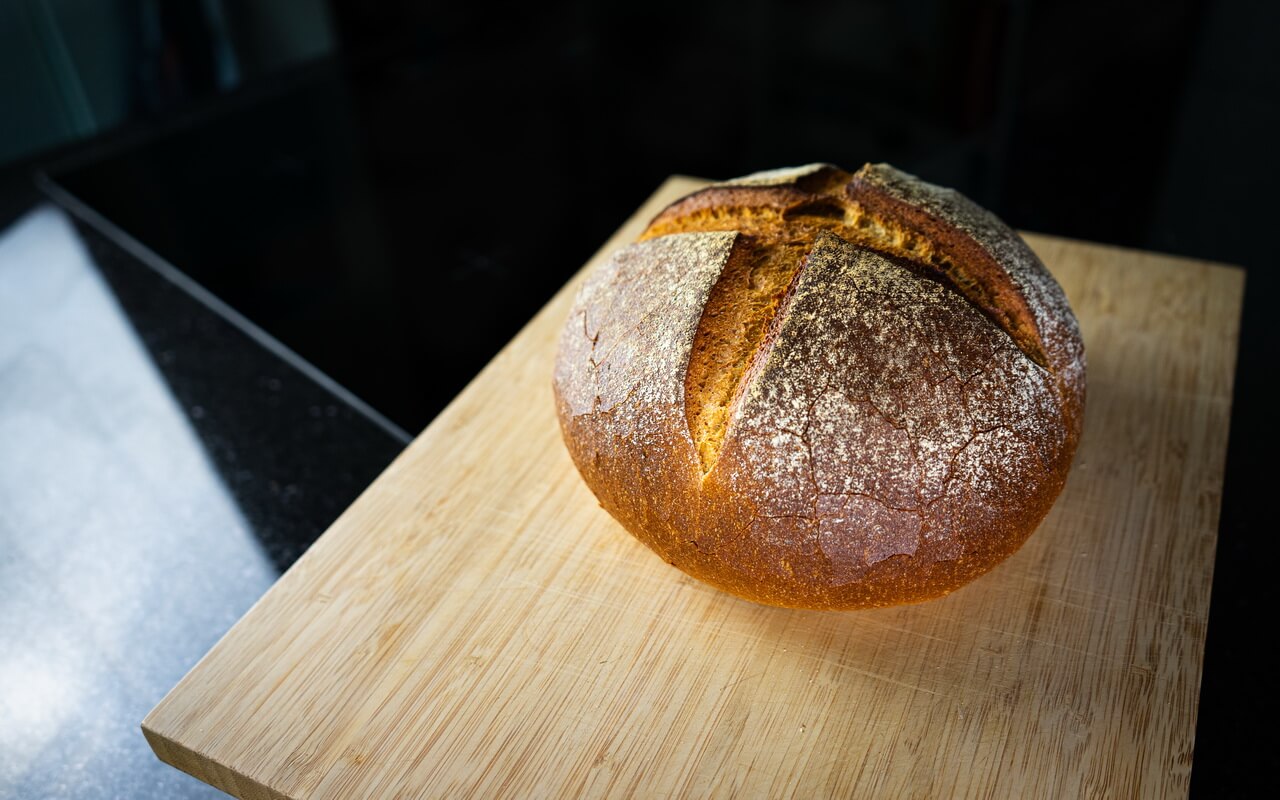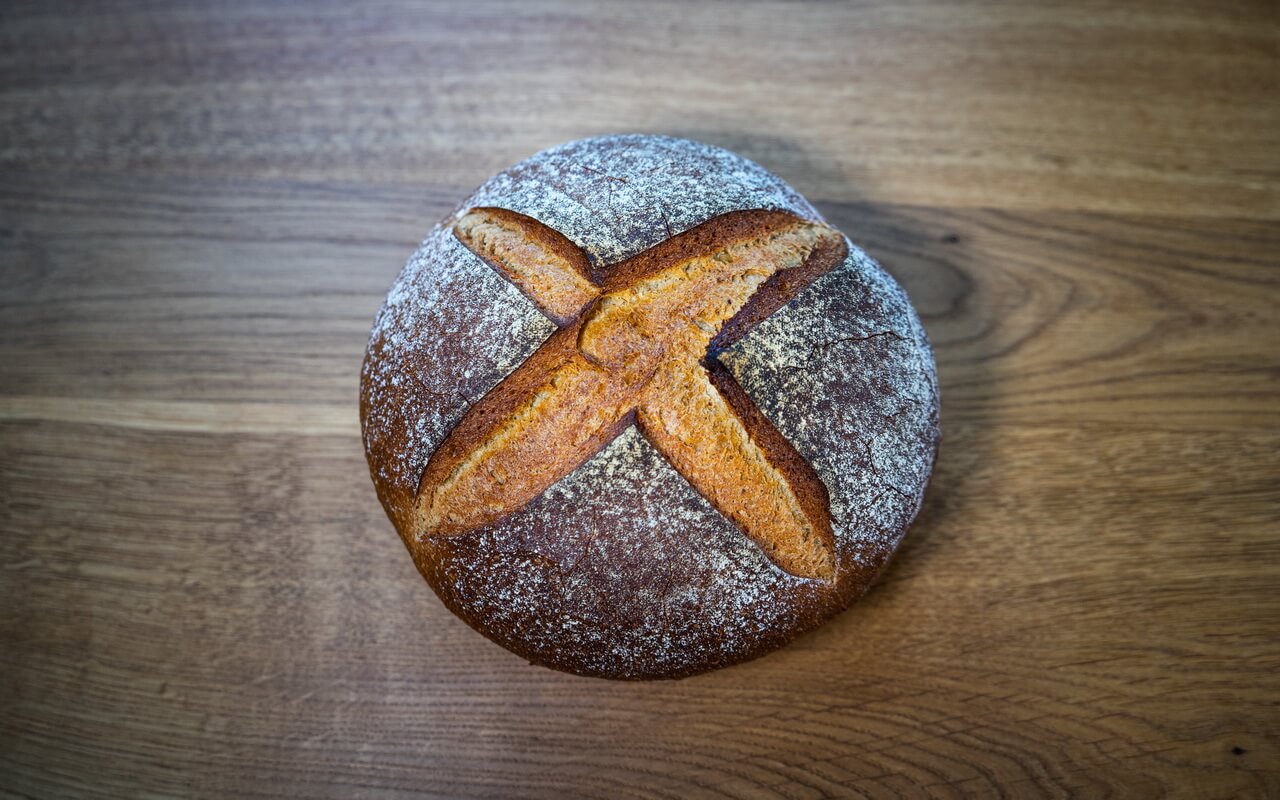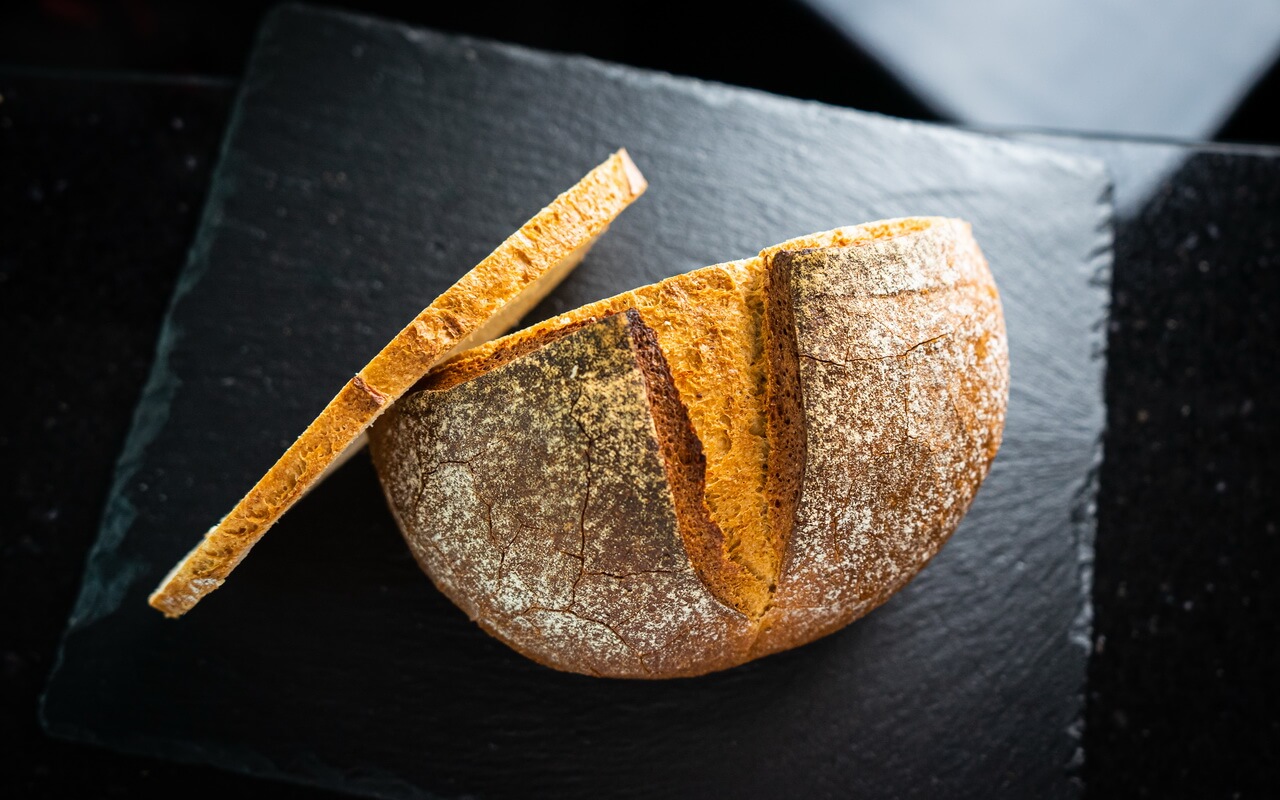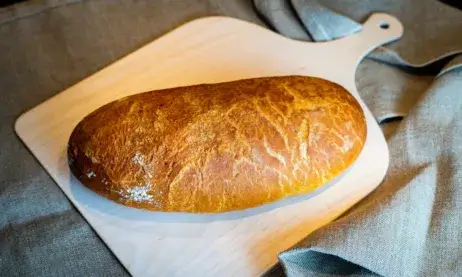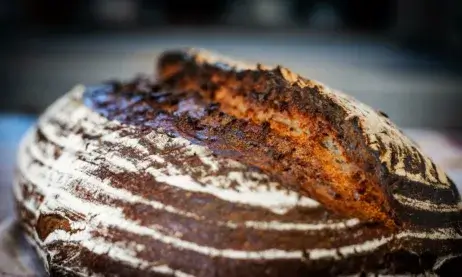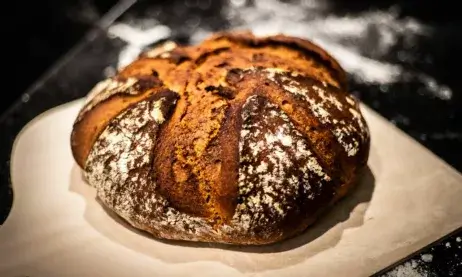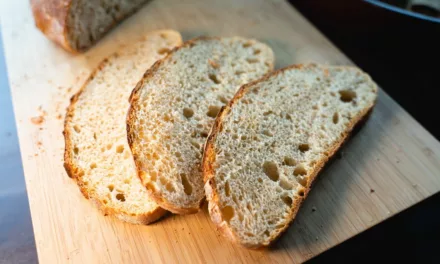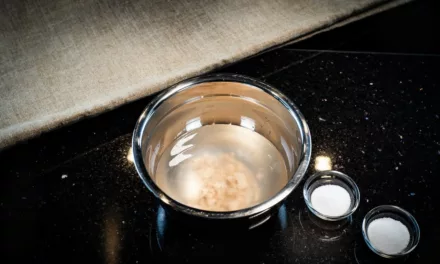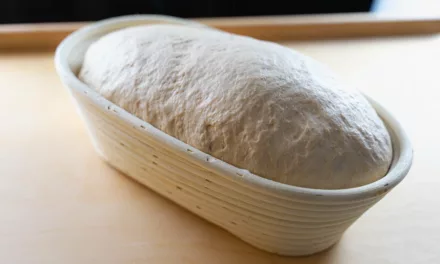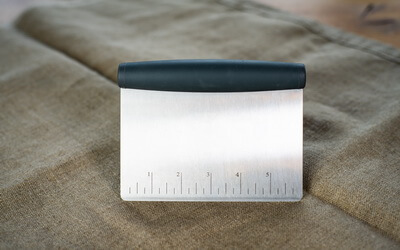Todays farmhouse bread can be created with only a little effort and it is perfect for the summer.
Imagine waking up on a farm early in the morning. The cock crows to wake up everyone on the farm, the sun is shining and it is not too hot yet. You come into the kitchen, the smell of freshly brewed coffee in combination with fresh baked bread is welcoming you.
You can already taste it? Good – here is the recipe for our farmhouse bread. It is just perfect to slow down and have a little sense of holiday on a farm at home.
Things to know before you start
Time Schedule
| Steps | Work time | Waiting time |
| Levain #1 | ~5 minutes | 5 hours |
| Levain #2 | ~5 minutes | 10 hours |
| Autolyse | ~5 minutes | 10 hours |
| Mix | ~20 minutes | 10 minutes |
| Bulk Fermentation | – | 45 minutes |
| Shape | ~10 minutes | – |
| Proof | – | 1,5 hours |
| Score | ~5 minutes | – |
| Bake | ~5 minutes | 45 minutes |
| Cool | – | 2 hours |
You will be able to enjoy this farmhouse bread in about 21 hours.
Total ingredients
| Weight | Ingredient |
| 10 g | Sourdough starter – Preferably from rye flour |
| 500 g | High-gluten flour |
| 100 g | Rye flour |
| 50 g | Bread crumbs from old bread |
| 12 g | Salt |
| 9,3 g | Yeast – Fresh |
| 360 g | Water |
You will have a dough of about 1.041,3 g in total.
Tip #1: Regarding the ingredient “Bread crumbs from old bread”. Personally if I have some leftover bread, I let it fully dry on the counter, shred it afterwards and place it in a sealed container. The bread crumbs can be stored for months and used for several other recipes.
Tip #2: If you don’t have any high-gluten flour, you can substitute it with 265 g first clear flour and 235 g all-purpose flour.
Difficulty
A simple recipe for a great farmhouse bread. You won’t even need to do any stretch & fold steps like in most other recipes. If you are not familiar with some of the steps in this recipe you can have a look at our sourdough bread for beginners recipe as it contains a lot of details for these.
Baking tools
You are good to go with some of our should have baking tools. A round banneton proofing basket is recommended to get a nice round shape for your loaf.
Steps
1. Levain #1
| Weight | Ingredient |
| 10 g | Starter – Preferably from rye flour |
| 50 g | Rye flour |
| 50 g | Water – Room temperature |
- Mix your sourdough starter with the ingredients above
- Store sealed for 5 hours at 20-22°C (68-71,6°F)
2. Levain #2
| Weight | Ingredient |
| – | Levain #1 |
| 50 g | Bread crumbs from old bread |
| 50 g | Rye flour |
| 60 g | Water – Cold |
- Mix your levain from the first step with the ingredients above
- Store sealed for 10 hours at 20-22°C (68-71,6°F)
3. Autolyse
| Weight | Ingredient |
| 150 g | High-gluten flour |
| 0,3 g | Yeast – Fresh |
| 100 g | Water – Room temperature |
- Mix the 3 ingredients together
- Store sealed for 10 hours at 20-22°C (68-71,6°F)
- Tip #1: If you don’t have any high-gluten flour, you can substitute it with 80 g first clear flour and 70 g all-purpose flour
- Tip #2: You can place the autolyse dough next to the levain dough in the same container
4. Mix
| Weight | Ingredient |
| 12 g | Salt |
| 9 g | Yeast – Fresh |
| 150 g | Water – 26°C (78,8°F) |
- Mix salt and crumbled yeast with water in a separate bowl to dissolve
| Weight | Ingredient |
| – | Levain |
| – | Autolyse |
| 350 g | High-gluten flour |
| – | Dissolved salt, sugar, yeast and water mixture |
- Mix all of the mentioned ingredients together in a stand mixer for 5 minutes on speed level one and 6 minutes on speed level two
- If there is still some flour at the bottom of the bowl after mixing for 5 minutes, you can add one tablespoon of water
- The dough shouldn’t stick too much to the bowl after mixing
- Tip #1: If you don’t have any high-gluten flour, you can substitute it with 185 g first clear flour and 165 g all-purpose flour
5. Bulk Fermentation
- Cover the dough and let it rest for 45 minutes at 20-22°C (68-71,6°F)
6. Shape
- Shape your dough by rounding it
7. Proof
- Dust your proofing basket with a bit of all-purpose flour
- Put your previously shaped dough seam-side-up in the dusted proofing basket
- Add a bit of flour on top
- Cover it with a towel
- Let it proof at 20-22°C (68-71,6°F) for 1,5 hours
8. Score
- Cover a pizza peel with parchment paper
- Gently take your dough out of the proofing basket by flipping it upside down on the pizza peel
- With a bread lame make one cut from left to right and from top to bottom (about 2 to 3 cm deep) on top of the dough forming a cross
9. Bake
- Preheat oven to 270°C (518°F) for ~45 minutes with the upper and lower heat function
- Put the loaf in the oven, create steam and bake for 50 minutes
- After 10 minutes lower the temperature to 200°C (392°F), let the steam out by opening the oven door for ~45 seconds and close it again
10. Cool
- After baking take out your bread immediately
- Let your bread cool for about 2 hours on some kind of grid before the first cut
Conclusion
Crust
As you can see in our gallery, the crust has a nice dark color (especially at the edges) and therefore a great crunchiness.
Crumb
The crumb of this bread is nicely soft with fine pores.
Taste
This bread contains 20% rye flour and 80% wheat flour which you can definitely tell in it’s flavour. It has an original taste and leaves a good feeling in the mouth.
Goes good with
Even though we called it a little effort farmhouse bread, it has a very delicious taste and can be combined with a lot of good things. For example it is great if you combine it with scrambled eggs or ham. A characteristic cheese would also be good with this loaf or fresh, maybe even self made, marmalade.

